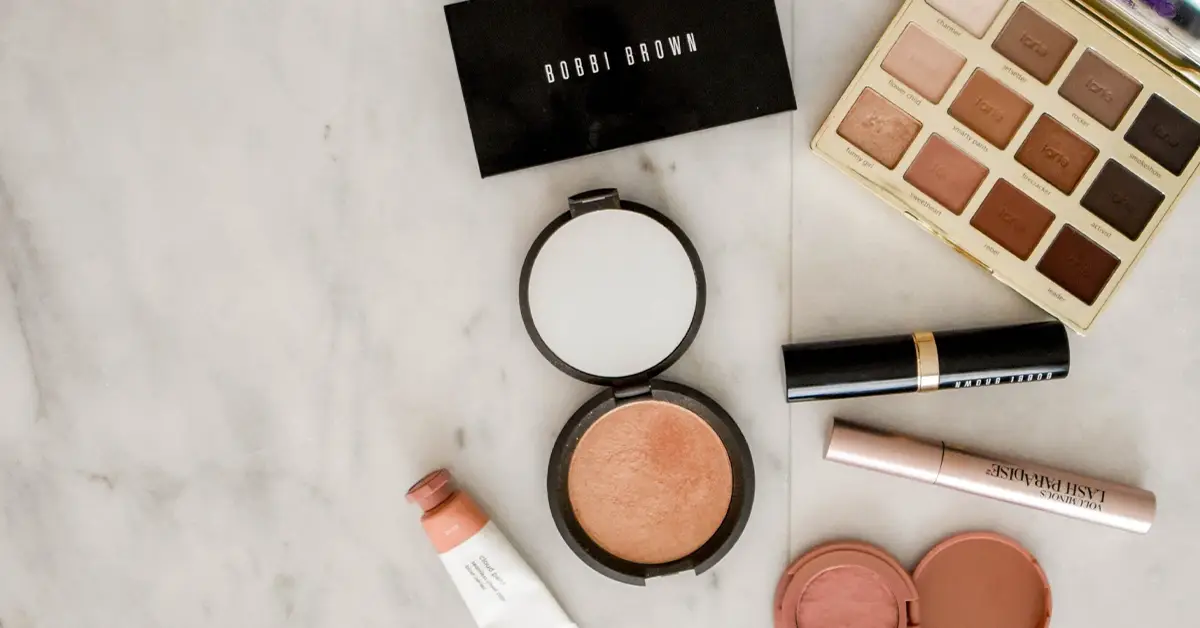According to Nielsen, 64 per cent of consumers try a new product because its packaging grabs their attention.
Packaging design can influence consumer behaviour, which is why it is important your product packaging is not only functional, but eye-catching too.
In this article, we identify the elements that should be included in cosmetic packaging, including the types of materials, examples of cosmetic packaging, labelling requirements in the UK, and the best packaging options for cosmetics.
How are cosmetics packaged?
Cosmetic products can be packaged in several ways to not only suit the product’s needs but also to ensure its safety, quality and appeal to customers.
Good packaging should protect the cosmetics from moisture, light and air that could damage its integrity. It should also be practical to use and visually appealing.
Some of the most common beauty product packaging formats include:
Jars and bottles
Cosmetic products like foundation, moisturisers, serums and creams are commonly packaged in bottles or jars made from plastic or glass. Typically they will come with pumps, droppers or screw caps to make it easier for consumers to dispense them.
Tubes
Tubes are another popular packaging solution, also used for moisturisers and hand creams. Often tubes will be made of plastic or malleable aluminium to allow for a lightweight, portable product that can be easily dispensed.
Palettes and compacts
When it comes to packaging, powder-based products like eyeshadow, compacts and palettes are most commonly used. This packaging is typically made of plastic or metal and is often designed to include mirrors and applicators for the consumer to use.
What are the types of packaging material for cosmetics?
Companies will opt for different beauty product packaging depending on what is best suited to preserve the quality of their cosmetic, what consumers will be attracted to, and how sustainable the materials are.
Some of the most common types of packaging used are:
Cardboard or paper
Paperboard is one of the most popular beauty product packaging solutions used to package a wide range of cosmetic products. Not only is this eco-friendly option renewable and biodegradable, it is easy to customise to create the perfect appealing packaging.
Plastic
Another popular packaging option, plastic is lightweight, cost-effective, and versatile. It allows you to create unique and bespoke packaging, but its environmental impact has raised concerns in recent years. As a result, many manufacturers are now opting to use bio-based or recycled plastics to reduce their carbon footprint.
Glass
Glass is one of the most expensive packaging solutions, but it does provide a truly luxurious and premium feel and experience for consumers. It is recyclable, durable and ideal for protecting beauty products from light, heat and moisture.
What are some examples of successful cosmetic packaging?
Cosmetic packaging comes in all shapes and sizes, and throughout the years there have been countless examples of companies utilising their packaging to draw in consumers and solidify their brand’s identity.
Below, we’ve listed some of the best examples of innovative and eye-catching packaging in the beauty space.
Glossier
This brand has taken the world by storm with its simple, clean and minimalistic packaging choices. Glossier lets its products speak for themselves, and by using subtle and sleek packaging and branding it has been able to communicate its values to consumers. Glossier has captured the ‘clean girl aesthetic’ market by keeping its brand clean and simple.
Benefit
Benefit has grown in popularity over the last decade, noted for its vintage-inspired look and packaging. Pink, white and silver are the foundations of this brand, surrounded by quirky typography and 1920s pin-up girls. This brand has quickly become a staple in many makeup bags, and its consistent classic aesthetic has made it instantly recognisable.
What are the labelling requirements for cosmetics in the UK?
Cosmetic labelling requirements vary across the globe, but in the UK products must comply with specific requirements to ensure consumer safety.
The following should always be found on the packaging:
- Product name
- Ingredients
- Batch number and expiry date
- Function or usage instructions
- Safety precautions
What is the best packaging for cosmetics?
Creating the best packaging for your brand depends on your target market, goal and brand identity, which is why there are a few considerations to keep in mind.
Brand and Design: Your packaging should always aim to reflect your brand identity whilst appealing to your target market.
Sustainability: With the growing consumer demand for eco-conscious products and packaging, sustainable solutions have never been more important.
Functionality: Above all, your packaging needs to be functional for consumers so it is easy to use, hygienic, and the desired amount of the product can be accessed.
At Birch, we understand the importance of designing and creating the perfect beauty product packaging.
If you are interested in learning more about our range of luxury packaging services, contact the team today.




